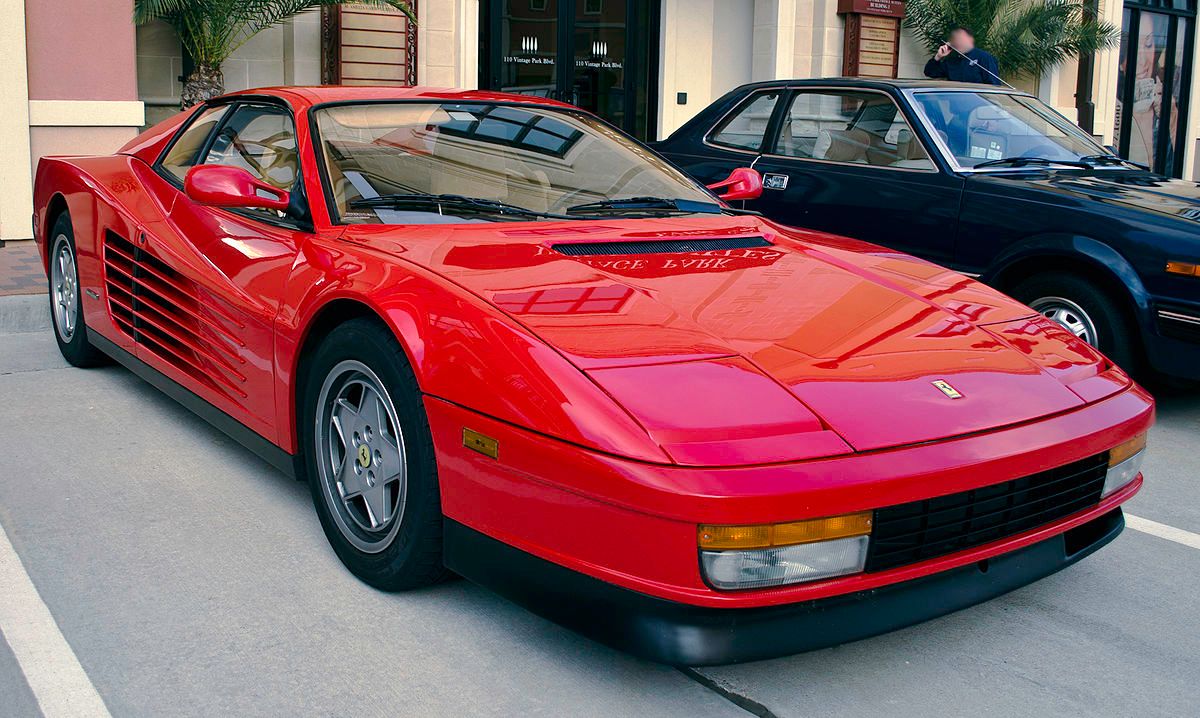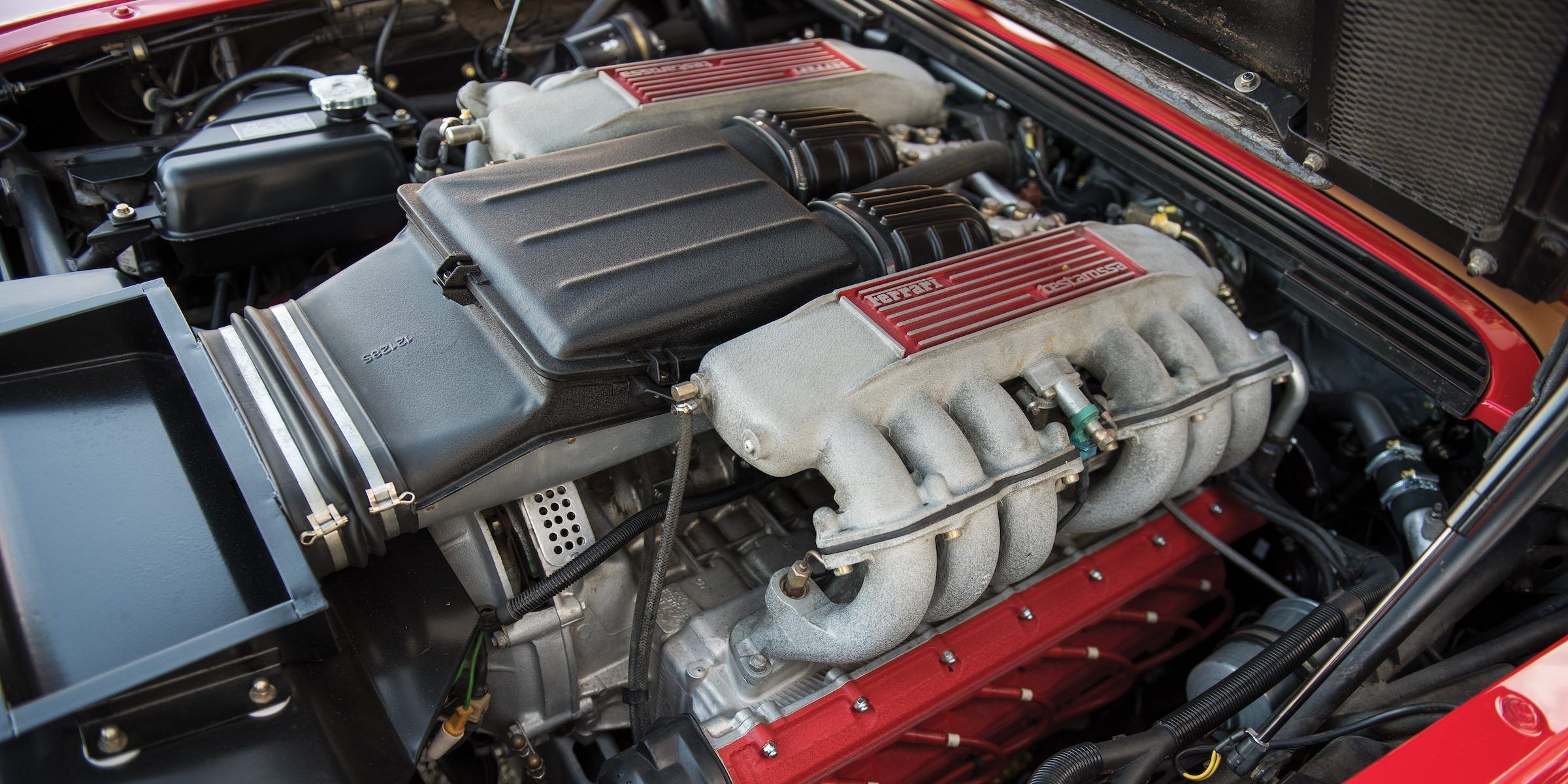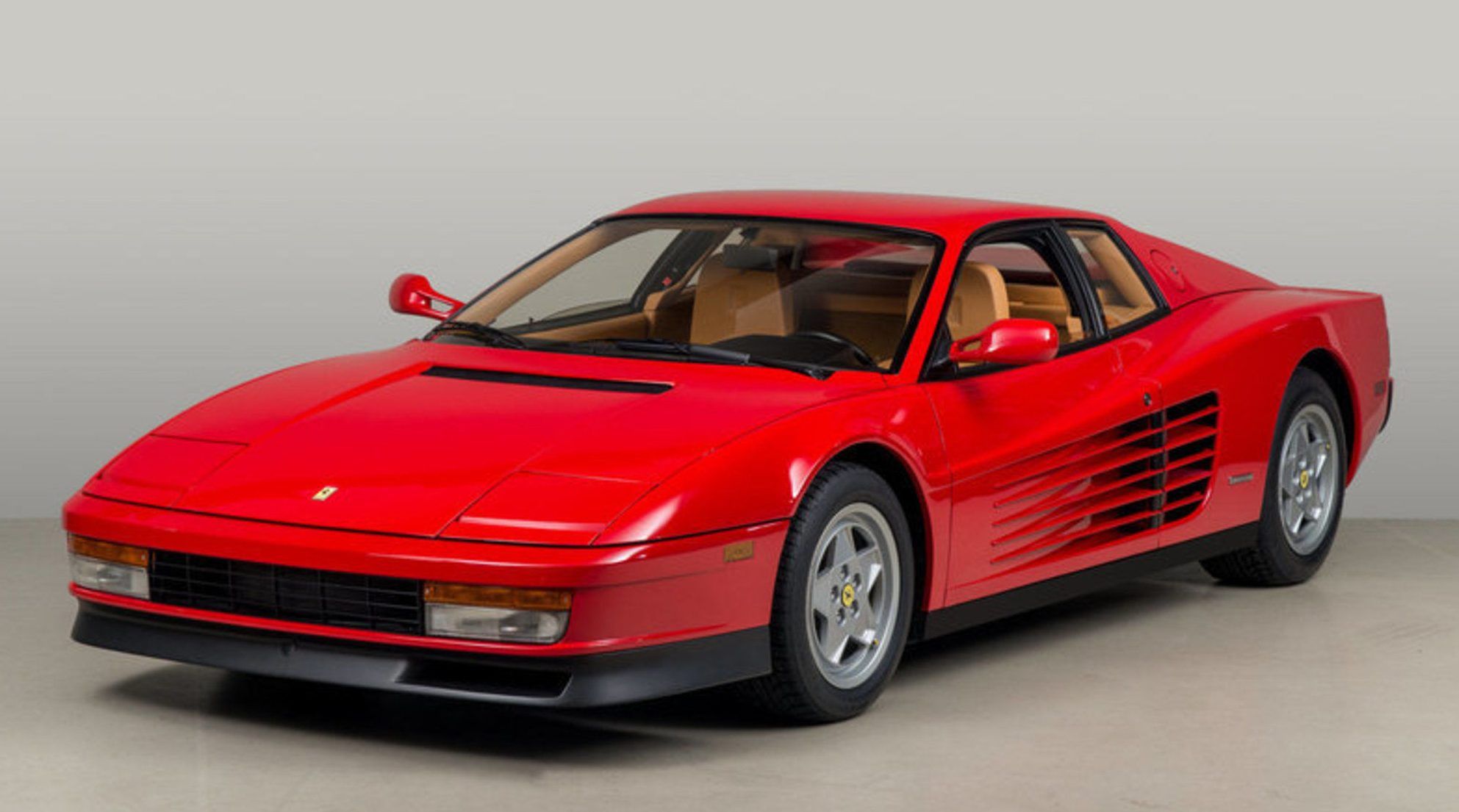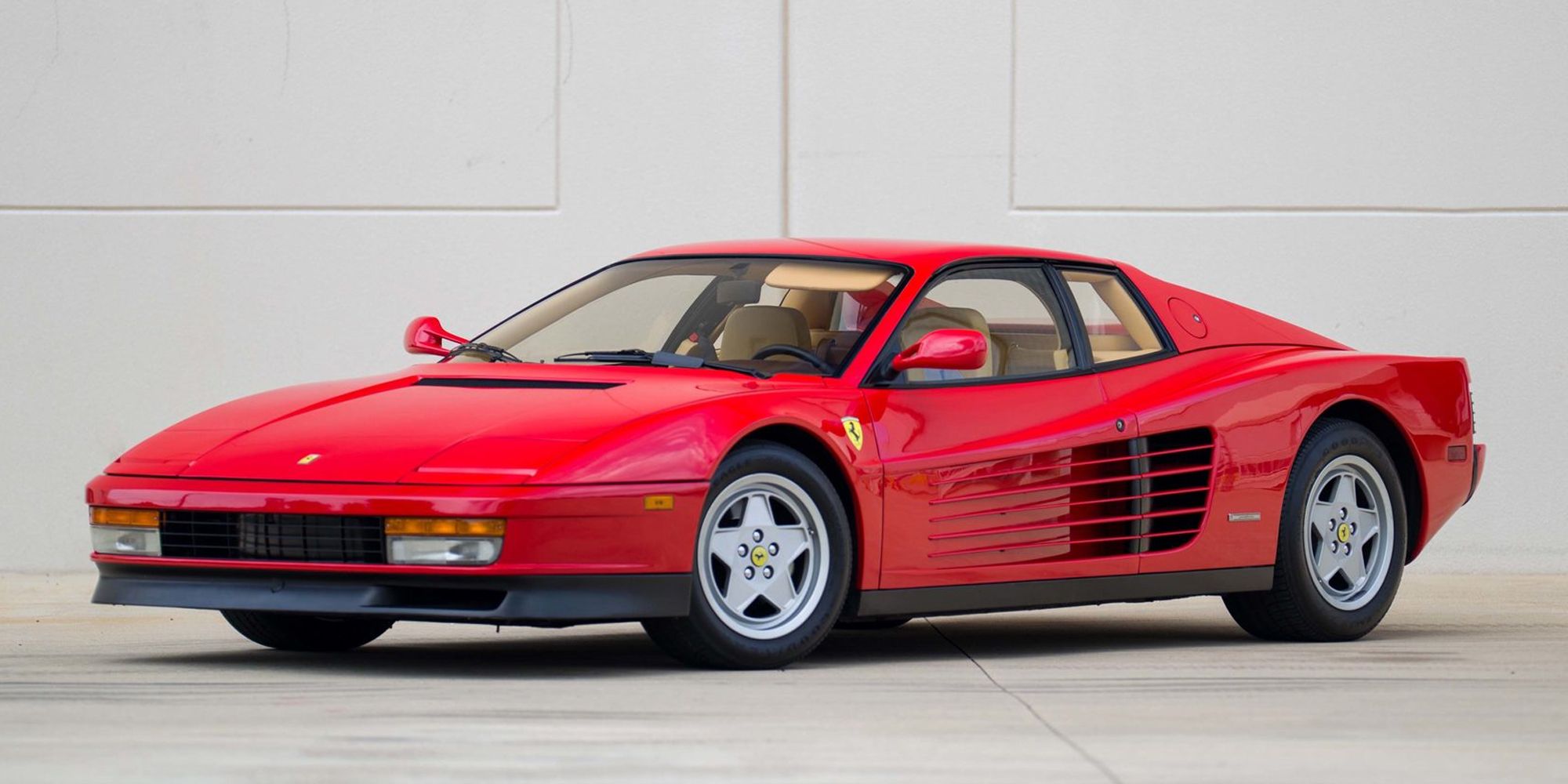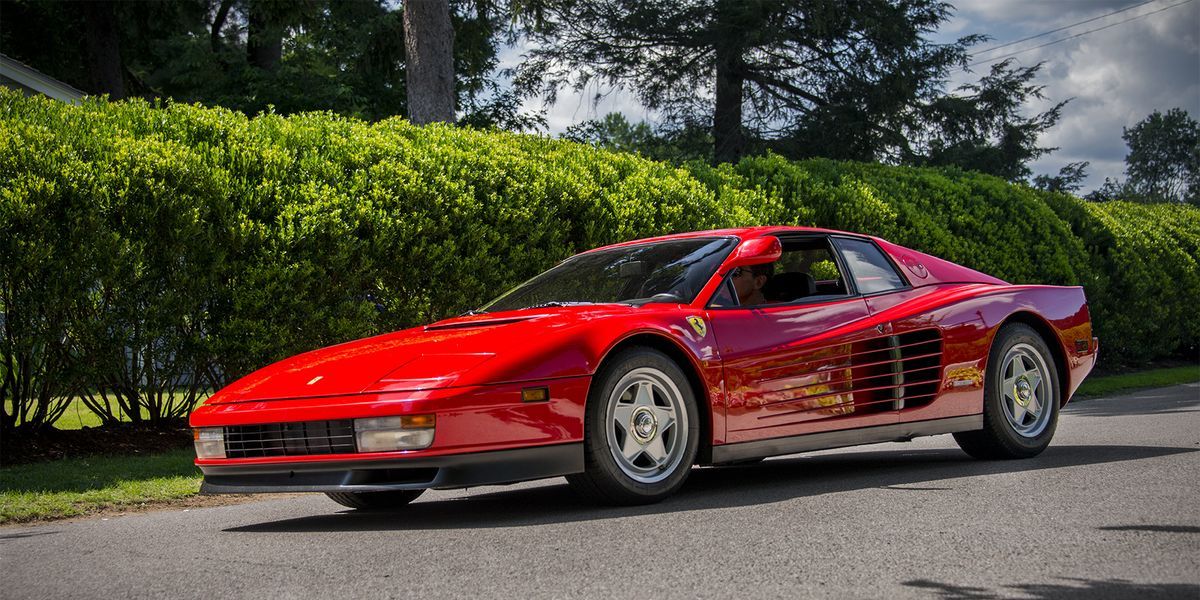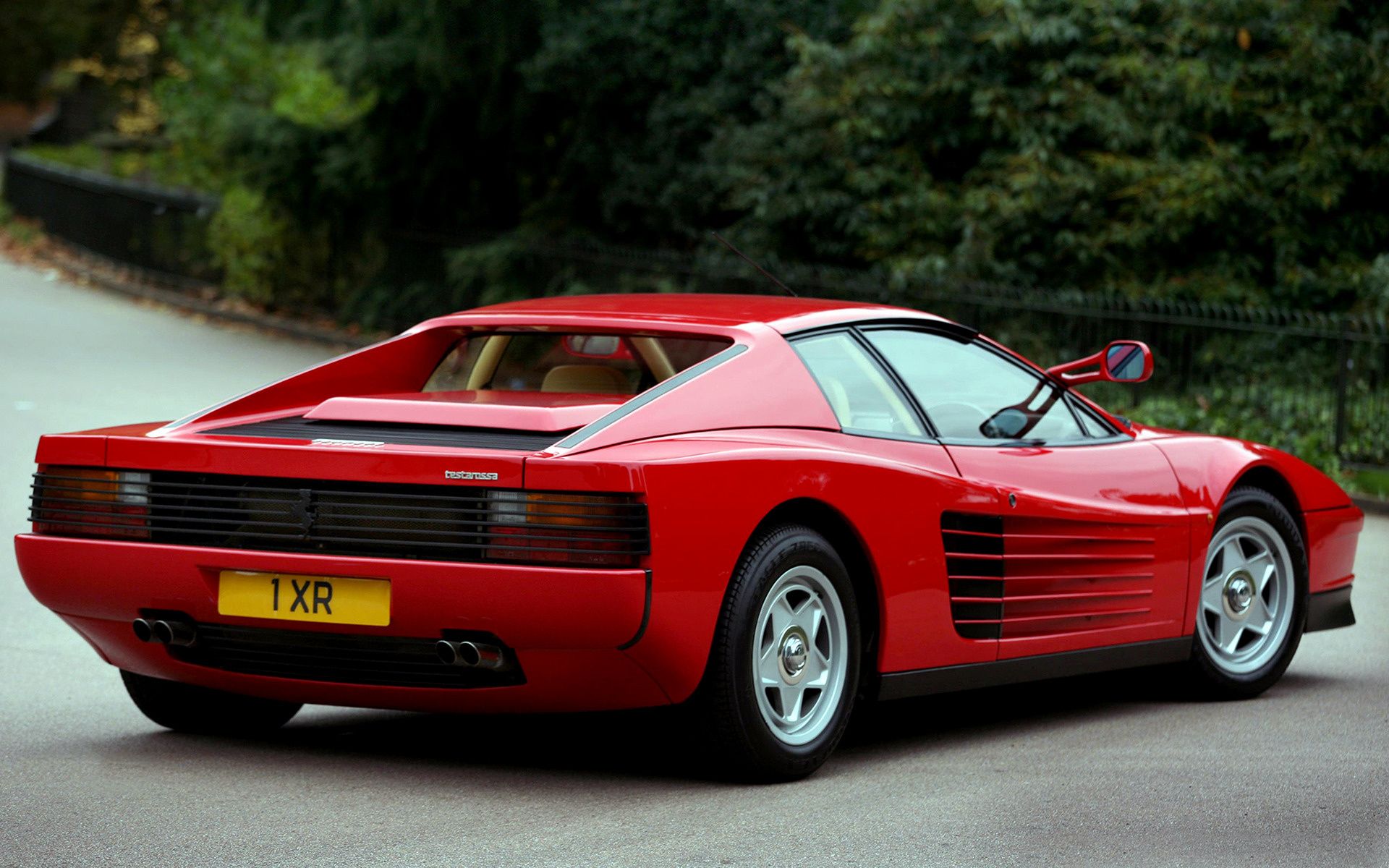It’s impossible not to reference Miami Vice when talking about the Ferrari Testarossa. The iconic TV show played an integral part in the success of Ferrar’s mid-engined supercar. The Ferrari Testarossa came as a replacement to the BB (Berlinetta Boxer). The BB was the first Ferrari to have a mid-mounted flat-12 engine as the midship layout was embraced by a lot of marques following the success of the Lamborghini Miura.
There were inherent faults with the Ferrari BB and in 1984 with the Testarossa, Ferrari set out to build the best GT to come out of Maranello. However, the management soon came to a consensus that it’s rather impossible to create a supercar with proper GT credentials if it had the engine in the middle. This led to the introduction of the Ferrari 575 Maranello, its successor as a front-engined GT Berlinetta; ditching the concept and sticking to their proven formula.
The Ferrari Testarossa became a huge hit in the ‘80s thanks to its attractive design and of course, Mian Vice. Now, however, the values of the iconic flat-12 Ferrari are starting to creep. It hasn’t gotten out of hand yet, but it won’t stay there for long.
Ferrari Testarossa: The Flat-12 Engine
As the midship layout was being popularized, Ferrari had to be a part of the frenzy. Their contribution was the BB with a flat-12. Contrary to what many think, the flat-12’s use wasn’t solely based on the “trend” since Ferrari at the time used flat-12 engines in Formula One. Being a brand inspired by racetracks, Ferrari saw the “trend” as an opportunity to display a new concept.
First of all, the Ferrari Boxer never really used a boxer engine. Contrary to popular belief, the engine was a 180-degree V12, which is entirely different from a Boxer. Subaru and Porsche used “proper” boxer engines where each piston has its own crankpin rather than each pair of pistons sharing a crankpin.
The Ferrari Testarossa used a naturally aspirated 4.9-liter longitudinally-mounted, 180-degree flat-12 engine. Power was rated at 385 horsepower where torque stood at 361 lb-ft. The Ferrari Testarossa managed to hit 0-60 in 5.2 seconds while top speed was rated at 180 MPH, insane figures even by today’s standards let alone the ’80s.
Ferrari Testarossa: Pininfarina Designed “Cheese Grater” Side Strakes
One of the distinct design cues of the Testarossa was its unique side strakes. The slits were added as part of the American homologation rules that state huge side intakes should not be left open and that it could pose a safety threat. After repositioning the radiators, the designers added the intakes, which in the BB led to the cabin overheating on hot days.
Ferrari placed radiators on the sides and therefore designed air inlets to feed the heat exchanger. Designers worked around the legislation by adding the now-iconic “cheese grater” strakes along with sides of the Testarossa.
This was one of the major design features of the Testarossa aside from the usual pop-up headlights, wide rear haunches to accommodate the massive flat-12 motor, and repositioned radiators. The taillight design was also unique to the Testarossa with horizontal slats running along the width of the car.
Ferrari Testarossa: A Unique Driving Experience
The experience inside the Ferrari Testarossa was a civilized affair than outright theatrics. Unlike the Countach, the Testarossa was leaps and bounds ahead in terms of usability. While driving the Countach was an ordeal, the Testarossa was a far more relaxing experience. Having a 5-speed gated manual does add to the drama of driving an ‘80s Italian exotic, but it’s the sheer excitement of the flat-12 that brings out the child in you. The 12-cylinder symphony is twice as glorious as the ones you get in a flat-six Porsche 911. Couple that with the exotic styling and you have yourself a stunning piece of Italian ingenuity.
Ferrari Testarossa: Values Are Creeping
A couple of years prior to the classic car market outburst, Testarossas were available for less than $50,000. After the market had ballooned to what it is today, examples of Testarossas sell for well over $100,000. A low mileage example like this one is up for a whopping $650,000! As an investment, the Ferrari Testarossa is a pass given that around 10,000 examples have been made, making it one of the most mass-produced Ferrari models ever. A 512 TR or 512M (the last production flat-12 Ferrari) makes more sense from a collector's standpoint.
Both the BB and the 512M took the glory of what the Testarossa used to represent. It was a genuinely good expression of having the advantages of a mid-engined layout whilst keeping the GT credentials. Although it was slightly underpowered when compared to the Countach, the Testarossa had better agility thanks to its aerodynamic shape. Also, driving one wasn’t the end of the world unlike Lamborghinis of the time. It was a civilized supercar, one that’s sumptuous yet passed off as an underrated gem.
Sources: YouTube, Ferrariworld

